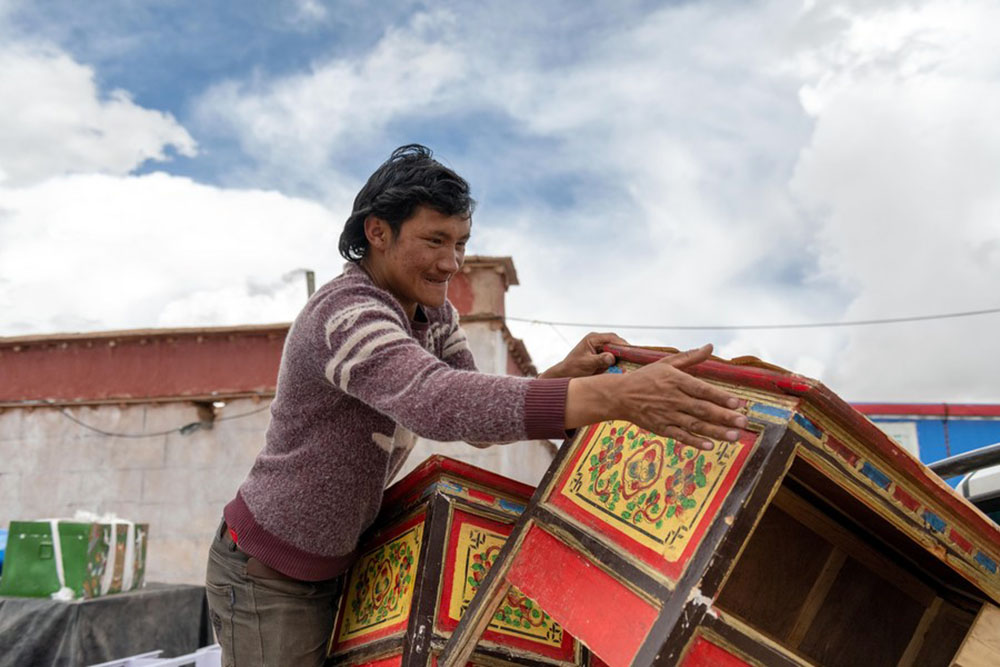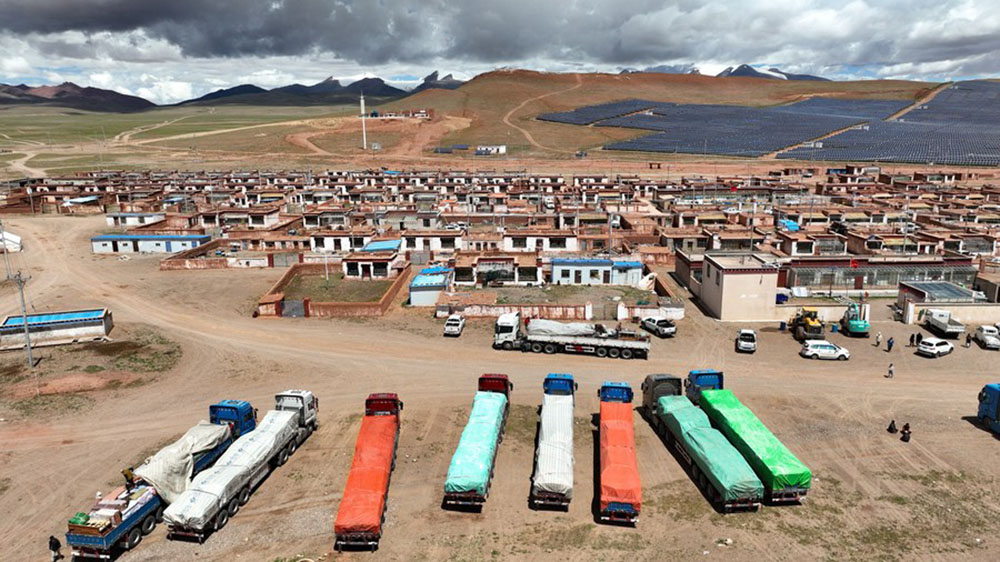(TibetanReview.net, Jul19’22) – Ahead of the drafting of a new national law on the ecological protection of the Tibetan Plateau, China has dispatched on Jul 19 morning a second batch of residents of Tsonyi (Chinese: Shuanghu), the world’s highest county located in northern Tibet Autonomous Region (TAR), to their new homes nearly 1,000 km southward, reported the official chinadaily.com.cn Jul 19. The report called it a part of the region’s plan to improve people’s living conditions and protect the fragile local ecosystem.
The regional government relocated the first batch of 2,900 residents in Tsonyi to Singpori in 2019.
The report said that more than 300 residents left their hometown in the county’s Doima Township at around 7:40 am to their new home in Singpori.
Singpori is on the north bank of the Yarlung Zangbo River in Gongkar County of Lhokha (Shannan) City, at an altitude of 3,600 meters, located some 10 km from the airport in the regional capital Lhasa.
The report said that four townships of the county will complete relocation by early August, and by then, all seven townships of Tsonyi, including the three that moved in 2019, will have completed relocation.

(Photo courtesy: Xinhua)
With an average altitude of over 5,000 meters, Tsonyi County covers a total area of 120,000 square km and is part of the Changtang National Nature Reserve, China’s biggest and highest nature reserve.
The report said that due to the high altitude and harsh environment, the county is not suitable for human habitation.
It was to look for pasture for their livestock that in the 1970s a group of herders drove cattle and sheep in a 300-kilometer migration from Shantsa (Xainza) County, Nagchu (Nagqu) City, to an uninhabited area where the average attitude was 5,000 meters. This move gave birth to Tsonyi County, chinatoday.com.cn earlier reported Nov 3, 2020.
But now, China plans to relocate all its 26,300 residents by Aug 11, according to the official chinadaily.com.cn Jun 27.
Previous such relocation programmes, including in parts of Qinghai Province, had been criticized by outside observers for their coercive nature and for pauperizing once proud, economically subsistent Tibetan nomads and farmers. The programme was seen to reduce such Tibetans to a life of abject dependence on state largesse and while leaving them in socio-economic disorientation.
China’s current plan is to relocate more than 130,000 Tibetans in nearly 100 townships of TAR in eight years, as reported by Xinhua Jun 27.



